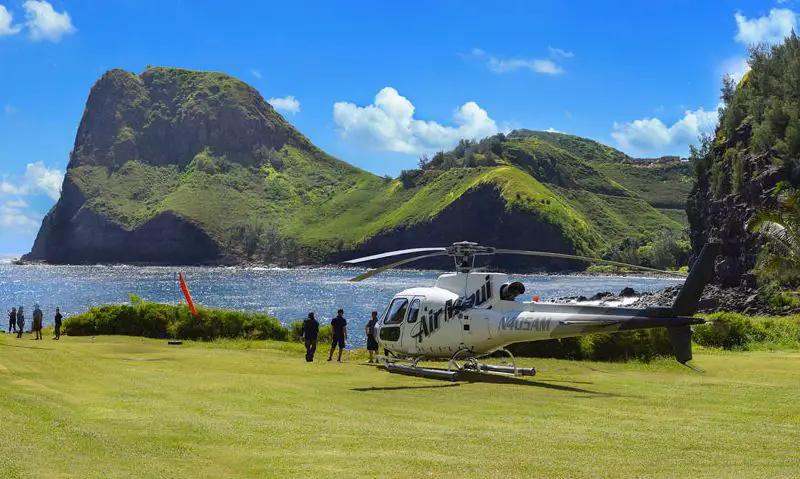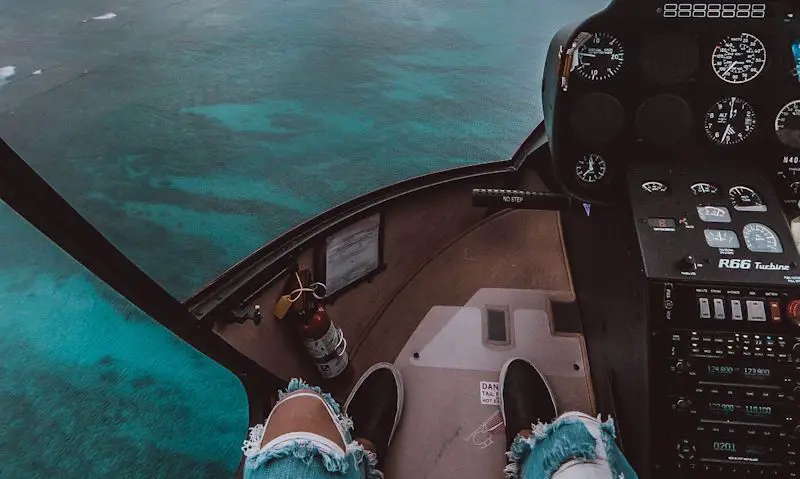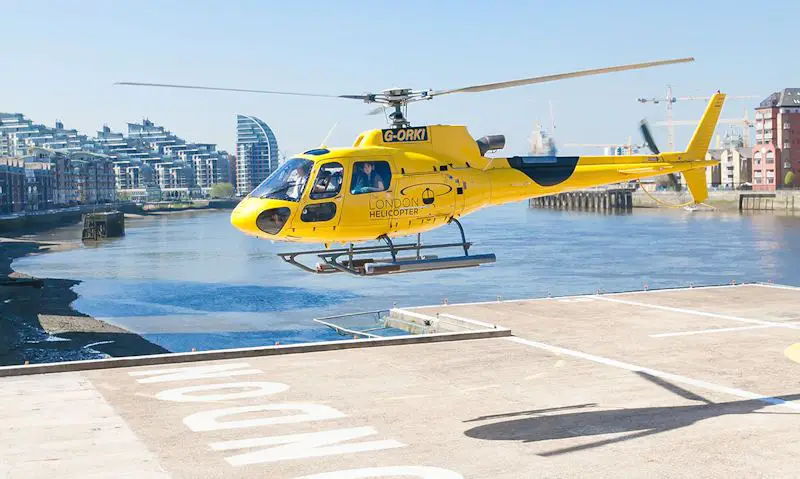Maui helicopter tours weight limit guide
Knowing your weight is essential when booking a Maui helicopter tour as it allows the company to balance the helicopter.
No avoiding the issue as guests will be asked for there weight; well personally weighed at the offices of the helicopter tour operators. You must not exceed 240lb to qualify for all tours made available, or not exceed the highest maximum total of 300lb to be guaranteed a Maui helicopter tour.
Only six Maui helicopter tour companies on the island, but this should be plenty for those who're within touching distance of there weight limit requirement.
Its only the two Maui helicopter tour operators of Maui Air and Sunshine Helicopters who operate a less fair weight limit of 240lb.
If exceeding this then guests can move on to the four remaining helicopter tour companies on Hawaii's second largest island.
Often its possible to jump above weight limit of the next one up of 250lb via Hawaii Helicopters or 260lb of Pacific Helicopters.
So that brings the number of helicopter tour operators available to you, as just two.
Not a problem though as most guests you're over the lower weight limits can be up to 300lb to take a helicopter tour over Maui.
Maui weight limit table
| Operator: | lb: | kg: | st: |
|---|---|---|---|
| Air Maui Helicopter Tours | 240 | 108 | 17.1 |
| Blue Hawaiian Helicopters | 300 | 136 | 21.4 |
| Hawaii Helicopters | 250 | 113 | 17.8 |
| Maverick Helicopters | 300 | 136 | 21.4 |
| Pacific Helicopters | 260 | 117 | 18.5 |
| Sunshine Helicopters | 240 | 109 | 17.1 |
Listed in alphabetical order are seven major Maui helicopter tour operators who provide rides to the paying public.
Remarkably, as weight can be an issue for certain guests; location of all operators near Kahului Airport allows for alternative booking options.
What I mean by that is if one company rejects your custom over weight issues; its not a problem as you can book a helicopter tour with one of there neighbours.
I really mean that too as all six companies are lined up side by side on the heliport.
Its possible this issue would be revolved as you go through the ordering process; but just know there are other companies willing to accommodate you.
So let's take a glance at companies who're willing to serve customers who bring more weight to the tour.
Higher weight limit operators
To avoid disappointment, I highly recommend customers who are borderline within reach of the minimum weight limit - too make use of companies higher weight limits.
By that I mean if you're approaching the lower weight limit 240lb; why not sign up with operators who allow 250lb or 260lb to be safe.
Its difficult to get an exact measurement to provide the helicopter tour company if asked.
So you might need to play it safe in case your weight is indeed higher than you thought.
With that in mind you'll need to register a Maui helicopter tour with one of Blue Hawaiian Helicopters or Maverick Helicopters, respectively.
Both companies operate the high passenger capacity, 6-seater Airbus ACH130 - also known as the AStar helicopter - so will be able to accommodate you in must cases.
If you're weighing between 260lb to 300lb; then be sure to book a flight with either one.
Combined weight policy
Not straight forward in terms of an individual weight limit; as often a combined weight limit has to be taken into consideration.
Pacific Helicopters for example, well limiting a seat per passenger to 260lb; ask any couple weighing over 400lb combined will need to upgrade to a private tour.
That is because the company cannot balance the helicopter with a third passenger in tow.
Where else you may see the combined weight limit policy in action but never stated is in regards to the front co-pilot seats.
Individuals wishing to upgrade to sit in the co-pilot seat in the front can do so, but often its must be in pairs, if you're under a certain weight limit.
If you don't qualify, guests will need to be open to sitting where they tell you too.
Passenger balancing
Important part of Maui helicopter rides - just as it is with all Hawaii helicopter tours - is what is known as weight and balances.
That basically means the helicopter tour company will sit you so the helicopter can be balanced - based on passengers weight.
Open seating allows for the operator to sit you in the rear or co-pilot seat without needing to upgrade at cost.
Its all about safety so this arrangement is often undertaken by Maui operators.
On the otherhand you can upgrade to a seat but you'll be downgraded last minute if the company can't balance the helicopter with other passengers onboard.
Its a serious procedure but there's no harm in ordering a preferred seat.
Upgrade option
Not so much a choice, but an upgraded seat refers to passengers who may exceed the weight limit, somewhat.
You don't have to be over the limit, but your body mass could be a nuisance for other passengers, so you'll be forced to upgrade your seat.
What that will mean for you is paying for an extra, empty seat next to you as to allow any weight to spill over.
It will come at cost to you with a price ranging from 50% off the second seat to paying full price.
It might be possible to upgrade to a comfort seat for free but that is very rare.
So there you have it, if you don't satisfy the weight requirement in terms of weight limit or your body mass, you'll be forced to upgrade to a second seat.
Summary
Guests who book a Maui helicopter tour that weigh under 240lb are FREE to order a tour with all six Maui operators.
If you weigh just above this weight limit then you still have four of the remaining operators.
However, if you weigh above the 240lb you'll be cutting it close; so guests should book a tour with one of the companies who have a higher weight limit of 300lb.
Be sure to revisit my Maui helicopter tour weight limit table to see which of the six tour operators minimum weight requirement is.
If you want to guarantee a helicopter tour with no trouble, be sure to book with Maverick Helicopters or Blue Hawaiian Helicopters - thanks to there generous 300lb limit.
Complications around combined weight limits is a possibility but its not often publicly stated.
But what is means is guests will often need to be under a combined weight limit to sit for example, in the two co-pilot seats if available.
Passengers who weigh over the weight limit would often be asked to upgrade to a second seat, at extra cost.


